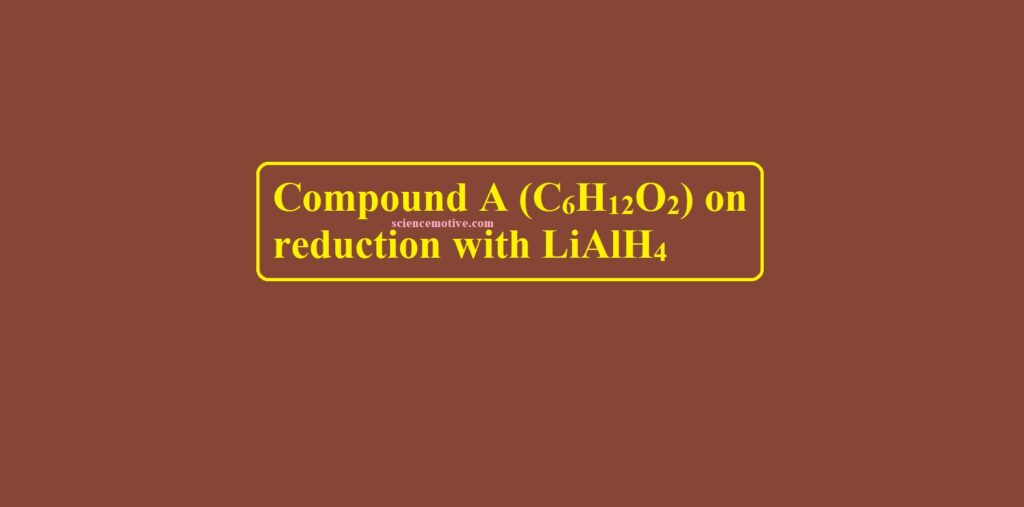Compound A (C6H12O2) on reduction with LiAlH4
Compound A (C6H12O2) on reduction with LiAlH4
Que. A compound A (C6H12O2) on reduction with LiAlH4 yielded two compounds B and C. The compound B on oxidation gave D which on treatment with aq. alkali and subsequent heating furnished E. The later catalytic hydrogenation gave C. Compound D was oxidized further to give F which was found to be a monobasic acid (mol. wt. = 60) find the structures of A, B, C, D, E, and F.
Ans. Upon reduction with LiAlH4, compound A (C6H12O2) gives two compounds, hence it must be an ester. Compound F is monobasic with mol. wt. 60. It is CH3COOH, hence compound D must be CH3CHO. As compound D is obtained by oxidation of compound B, hence compound B shall be alcohol i.e., CH3CH2OH. As compound A on reduction with LiAlH4 gives CH3CH2OH, hence it must be CH3COOC4H9 (n-butyl acetate).
Step 1: Upon reduction with LiAlH4, compound A (C6H12O2) gives two compounds, hence it must be an ester and the products i.e. B and C are Ethanol and Butanol respectively
C3H4 COOC2H5 → CH3CH2OH + CH3CH2CH2CH2OH
A B C
Step 2: B (Ethanol) upon oxidation produce Ethanal (CH3CHO) which on further oxidation gives Ethanoic acid (CH3COOH)
CH3CH2OH → CH3CHO → CH3COOH
C D
Step 3: Ethanal upon treatment with aqueous alkali (aq NaOH) produces an Aldol. Further heating of this Aldol gives E (Crotonaldehyde) this on treatment with H2/Ni give butanol
CH3CHO → CH3 – CH(OH) – CH2CHO → CH3CH = CHCHO → CH3CH2CH2CH2OH
D Aldol E
# Aldol represents the coexistence of both alcoholic and aldehydic groups in a compound
# Crotonaldehyde represents a molecule that contains both alkene and an aldehydic group in a compound CH3CH = CHCHO (But-2-enal).
